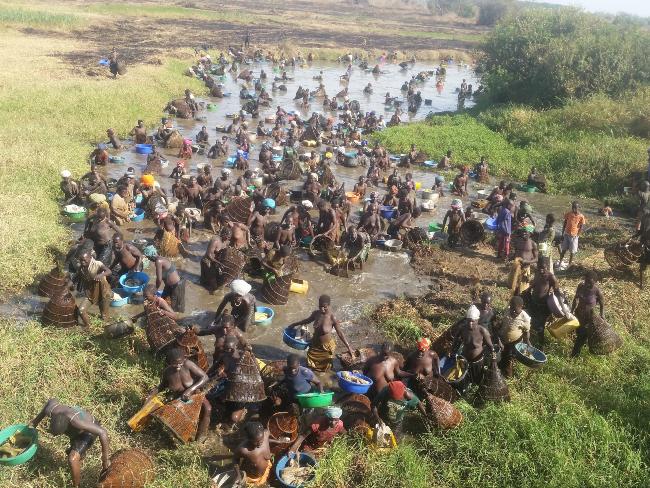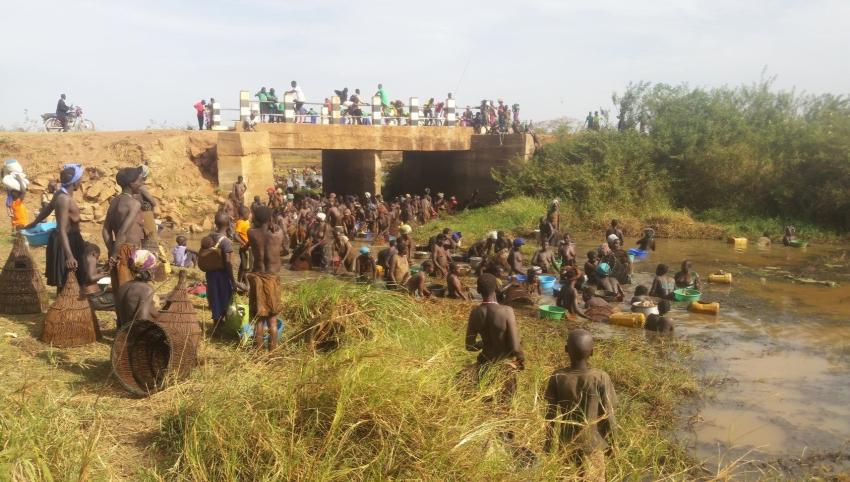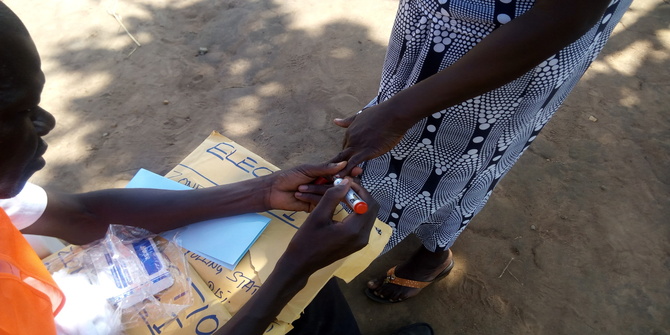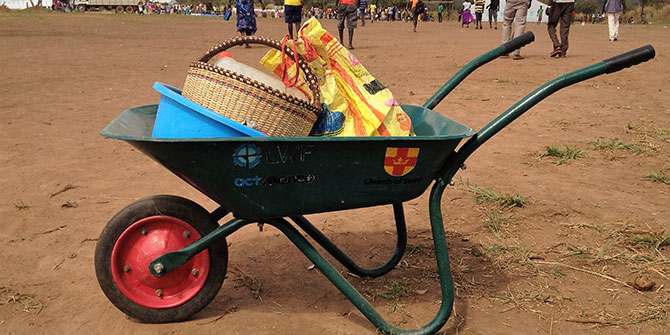National and international policies for environmental conservation and sustainability in post-war northern Uganda can work at the expense of local needs. Along the River Agago in Acholiland, such policy interventions have fallen short of countering trajectories of environmental degradation caused by the lasting effects of violent conflict.
Drawing from the research project Deconstructing Notions of Resilience, this is the first in a two-part blog series exploring the unique complexities that post-war settings add to issues of diminishing natural environments.
River Agago’s ecosystem in the aftermath of war
More than four hundred kilometres north of Kampala, the River Agago is surrounded by fields and marram roads with barely any traffic, away from industry and a clear source of pollution. Located in Agago, a remote district on the eastern side of the Acholi sub-region, the river looks tranquil and healthy. But the river is a shadow of its pre-conflict self.
The River Agago feels the impact of crucial but environmentally destructive humanitarian responses during the twenty-year long Lord’s Resistant Army (LRA) conflict from 1987 to 2008. It has additionally been affected by the government’s strategy of protecting the civilian population during the war which, combined with subsequent unsustainable cultural practices, have pushed it closer to a tipping point of destruction.
Patongo, the main town in Agago district, was a small settlement of around 5,000 people in the early 1990s. This was before the Ugandan government turned it into the second largest internally displaced persons (IDP) camp in the Acholi sub-region during the LRA conflict, with 65,000 people living in the camp at its peak. With the entire population left dependant on international humanitarian relief, including access to water, the river became a critical resource.
At the beginning of 2005, due to the intensity of the crisis, an international response agency – Médecins Sans Frontières (France) – pumped the river dry and proceeded to drill several points in the river bed spanning several miles across in search of more water beneath the surface. Although countless lives were saved by this humanitarian intervention, these activities were conducted without any scientific or expert guidance, and the river was stretched beyond its ability to recover naturally to its previous stable state.

Prior to the set-up of the IDP camp, the local communities along River Agago had within their culture a sustainable mechanism for utilising the river’s resources. Up until the latter half of the 1990s, fishing was conducted in such a way that the river was partitioned among individual fishermen. Once partitioned, individuals were responsible for the health of fish and water within their territory. As such, individuals built ‘beaver dam’ like barriers (kek) in order to mark territories, trap fish and maintain a volume of water capable of sustaining a healthy river even during drought. During the rainy seasons, the volume of water would make the river too deep for kek to work or be visible. But as dry season set in and the water receded from the flooded banks into the stream, the volume in the river dropped and individuals begin rehabilitating existing kek and/or setting up new ones.
This was practised by adult males, helped by their sons. In the process they passed vital knowledge and experience on to them, a new generation to continue the tradition. The implication of kek practice was that even during sustained periods of drought, the waters of the river would remain deep enough to sustain a healthy population of a range of species of fish. The high volume of water and the structure also maintained a healthy natural environment and ecosystem. Due to reduced flow and depth, the water would remain fairly clean for domestic use throughout the year, despite also being used by cattle keepers for their animals.
Due to this stable ecosystem, the vegetation along the riverbanks would remain green, even in the dry period with no threat of seasonal burning, providing protective cover from erosion, silting and extreme evaporation. It also provided permanent and temporary habitat for a range of reptile and birds species including the endangered grey crowned crane.
Environment and civilian protection
As a military strategy to protect the IDP population from LRA attacks, an all-round three mile distance from the boundary of the camp was cleared, bringing down any vegetation rising above a quarter metre. The population’s need for fuel then saw the clearing expand several miles from the initial three, leading to the destruction of the ecosystem on an unimaginable scale. The vegetation cover along the river banks that previously provided protection against erosion was no more; the river was consequently subjected to sustained erosion leading to silting. The combination of extreme evaporation and an inability to retain water meant River Agago became too shallow during the dry season.
The shallow water presented new opportunities to the local population. They were no longer restricted to modern fishing gears only accessible from a town more than 100 miles away. Women – previously restricted from fishing by the depth of the river, their inability to swim and the local tradition – were a new group able to use the river, particularly in the dry season as the water no longer required swimming capability. Men use spears and women use traditional fishing baskets as their fishing gear respectively – a typical fishing group ranges between 50 to several hundred in both groups, creating a spectacular scene (see photos 1.1 and 1.2).

Women rely on men to first contaminate water completely, as mud from the river bed is unsettled and released into the water by the movement of hundreds of men constantly thrusting their spears into the base with the hope of hitting a fish. The muddy water makes it extremely difficult for fish and other aquatic organisms to breathe, forcing them to the surface in search of fresh oxygen. Once the men have exhausted the big fish in a portion of the river, they move on along so that the women groups step in behind them clearing any remaining creatures in the water. This activity is accompanied with the burning down and clearing of riverbanks for access, while the hundreds of people in the fishing bonanza push soil into the water as they get in and out to fish, further blocking the river. With the water already unable to flow and other parts dried out, the water is incapable of naturally filtering itself, hence the river remains in this extreme state almost devoid of life until the return to the rainy season, which could be several months away.
The pre-IDP river’s ecological system was resilient and possessed a state of equilibrium capable of absorbing disturbances, helped by communities’ positive cultural practices. The return to peace witnessed a contrary emergence of behavioural patterns. While the ecosystem emerged in 2008 in a critical state, the consequence of destructive civilian protections and a disastrous humanitarian response, the post-war population’s coping mechanisms are proving fatal to the environment.
Image by grassrootscottages from Pixabay.





